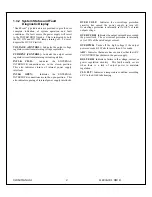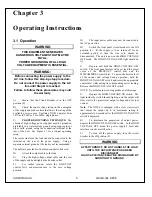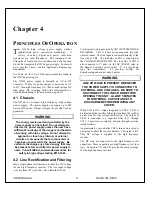
X2364 MANUAL
15
118044-001 REV E
Chapter 8
RS232
I
NTERFACE
M
ANUAL
his document describes the specific implementation
of the Spellman – Customer RS-232C Serial Data
Interface. This interface is an add-on to the Spellman
XLG Power Supply. Its purpose is to provide remote
monitoring and control capability of certain analog and
digital functions. The interface is microcontroller-based
and is built on a module that interfaces with the power
supply control assembly. Since the data link between the
Customer computer and the Spellman Power Supply is
fully dedicated and hardwired (there are no intermediate
devices such as modems), none of the RS-232C
handshaking signals are required.
The interface uses ASCII encoded character strings for
data transmission. Transmission error checking is
implemented using modulo 256 checksums. The
transmission format is 9600 baud, no parity and one stop
bit.
The interface within the power supply acts strictly as a
slave device. It will not transmit any messages over the
data link unless it is first commanded to by the Customer
master computer.
The design is based on the 87C552 microcontroller. This
unit has a built-in eight channel analog multiplexer and
10-bit A/D Converter. To perform D/A conversions, we
are using external 12-bit D/A Converters. To meet our
resolution requirements of 0.1%, 10 bits is the maximum
number of bits that can be used.
8.1 RS232 Overview
RS-232C is used with single-ended transmission over
relatively short lines. The standard defines the electrical
characteristics for the interfacing of Data Terminal
Equipment (DTE) and Data Communications Equipment
(DCE).
In our case, the Customer Computer is the
DTE and the Spellman Power Supply equipment is the
DCE.
RS-232C recommends the use of DB-25 female connector
jacks mounted of the DCE (the power supply) equipment.
However, since none of the RD-232C handshaking lines
will be used, a DB-9 female connector will be used to
save space.
The DB-9 connector will be configured to work with a
“standard” 9 pin IBM PC-AT compatible communications
port as defined below. If the power supply is connected
to a “standard” 25 pin communications port the
interconnect cable must reverse pins 2 and 3 as shown in
Table 8.1.
The required signal connections at the power supply’s
DB-9 connector are:
Pin 2 – RxD – Receive Data
(computer receive line / power supply transmit line)
Pin 3 – TxD – Transmit Data
(computer receive line / power supply receive line)
Pin 5 – GND – Ground Signal
Pin 1, 4 and 6
of the power supply’s BD-9 connector are
shorted together at the connector.
Pin 7 and 8
of the power supply’s BD-9 connector are
shorted together at the connector.
Pin 9
of the power supply’s BD-9 connector is not used.
The ASCII codes that are used by the data interface are
shown in Table 8.2.
T










































